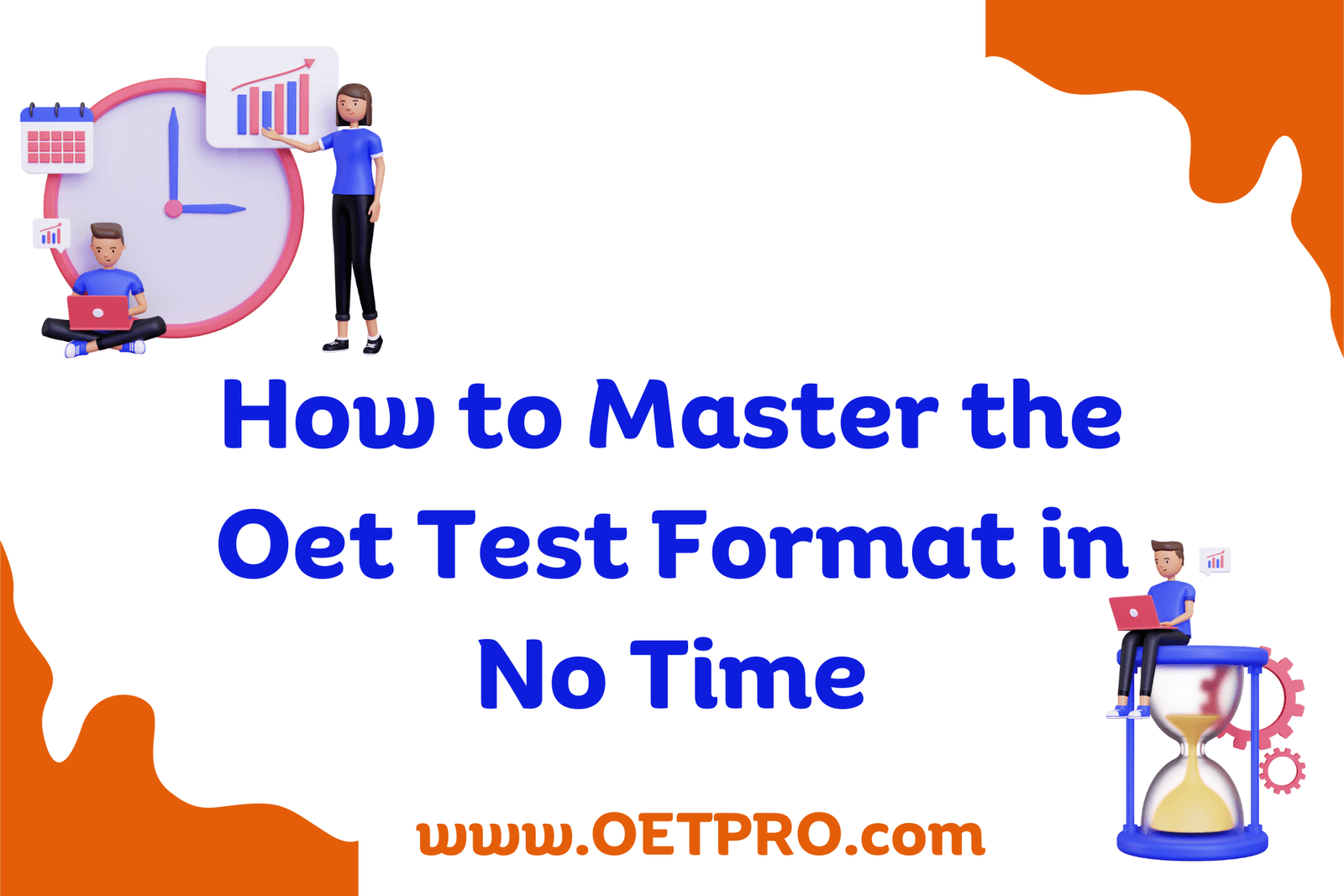
How to Master the Oet Test Format in No Time
In today's world, healthcare workers often work in diverse and multicultural environments. To perform well in such settings, strong English communication skills are essential. This is where the Occupational English Test (OET) becomes important.
The OET is not just another language proficiency test; it is a specialised assessment designed specifically for healthcare communication. It evaluates the practical language skills healthcare professionals need in real clinical situations.
The OET format includes four main components: Listening, Reading, Writing, and Speaking. Each part mirrors real-life tasks healthcare workers perform daily, such as listening to patient consultations, reviewing medical texts, writing referral letters, and participating in role-play scenarios.
Why the OET Matters
The Listening sub-test evaluates how well candidates understand important information in patient consultations and medical presentations. This skill is crucial for communicating effectively with patients and colleagues.
The Reading sub-test checks comprehension of healthcare-related texts, which is vital for staying updated with medical guidelines and research.
The Writing sub-test assesses the ability to produce clear, structured letters commonly used in healthcare contexts.
The Speaking sub-test evaluates how well candidates communicate with patients or other professionals through realistic role-plays.
Together, these sections ensure that OET test-takers can handle the complex language demands of healthcare environments.
OET Scoring System
Scores range from A (highest) to E (lowest).
The required score varies depending on the healthcare profession and the rules of the country or organisation you are applying to.
Achieving the required OET score is often the first step toward international career opportunities for healthcare professionals.
Success in the OET
Doing well on the OET requires more than basic English fluency. Test-takers must practise consistently, build medical vocabulary, improve communication skills, and manage time effectively.
Getting feedback from experienced OET tutors or native speakers can significantly improve performance.
Whether you aim to work as a nurse, doctor, pharmacist, or other healthcare professional, passing the OET opens the door to better patient care, strong teamwork, and a successful future in healthcare.
Understanding the OET Test Format in Detail
The Occupational English Test (OET) is recognised by healthcare boards and institutions worldwide. It measures the English proficiency needed for safe and effective communication in healthcare settings.
Below is a detailed breakdown of the OET test format.
1. Overview of the OET
OET assesses four essential language skills:
-
Listening
-
Reading
-
Writing
-
Speaking
Each component reflects a real-life healthcare scenario, preparing candidates for professional roles in English-speaking countries.
2. Listening Sub-Test
The Listening section tests understanding of spoken English in clinical contexts. It has three parts:
2.1 Part A: Consultation Excerpts
You will hear a conversation between a healthcare professional and a patient, followed by multiple-choice questions.
Typical topics include symptoms, diagnosis, medical history, and treatment options.
Time: ~25 minutes
2.2 Part B: Presentation Excerpts
This part includes listening to short healthcare-related talks or presentations and filling in missing information.
Topics include medical procedures and healthcare policies.
Time: ~35 minutes
2.3 Part C: Role-Play Recording
You will listen to a role-play involving a healthcare professional and a patient.
Questions focus on communication effectiveness.
Common situations include counselling, giving instructions, or explaining treatment options.
Time: ~10 minutes
3. Reading Sub-Test
The Reading test checks your ability to understand written healthcare materials. It includes three parts:
3.1 Part A: Rapid Reading
You must scan short texts to find specific information quickly.
Texts may include patient profiles or clinical guidelines.
Time: ~15 minutes
3.2 Part B: Careful Reading
This part evaluates comprehension of longer, more complex texts.
You will answer multiple-choice questions or match information to paragraphs.
Texts include research articles, medical reports, and patient leaflets.
Time: ~45 minutes
3.3 Part C: Gap-Fill Exercise
You must complete a summary of a healthcare text by filling in missing information.
This checks deeper understanding of main ideas and details.
Time: ~15 minutes
4. Writing Sub-Test
The Writing test assesses your ability to write professionally in healthcare.
4.1 Writing a Letter
You will receive case notes and must write a formal healthcare letter.
Examples include referral letters, discharge letters, or advice letters.
Time: 45 minutes
5. Speaking Sub-Test
The Speaking test measures your spoken communication skills in healthcare settings. It includes:
5.1 Role-Play
You will perform two role-play scenarios based on real healthcare situations.
You get two minutes to prepare before each role-play.
Each role-play lasts ~5 minutes
5.2 Interview
You will answer questions about your experience and discuss healthcare topics.
Duration: ~20 minutes
6. OET Scoring
OET uses grades A to E for each sub-test.
Most healthcare regulators require a minimum of Grade B or C+, depending on the profession.
Many platforms like OetPro offer free OET practice tests to help you prepare.
7. Tips to Prepare for the OET
7.1 Practise Regularly
Familiarise yourself with the test format and structure.
7.2 Build Medical Vocabulary
Understanding medical terms helps in every section of the OET.
7.3 Improve Communication Skills
Clear writing and speaking are key.
7.4 Manage Your Time
Practice completing tasks within the given time limits.
7.5 Seek Feedback
Feedback from tutors helps identify weaknesses and improve accuracy.
Final Thoughts
The OET test format is designed to evaluate the English communication skills of healthcare professionals thoroughly. By understanding each component and preparing strategically, you can increase your chances of achieving your target score.
With dedication and consistent practice, you can succeed in the OET and take meaningful steps toward your healthcare career goals abroad.